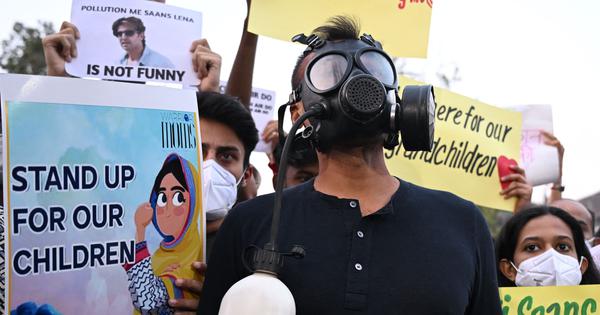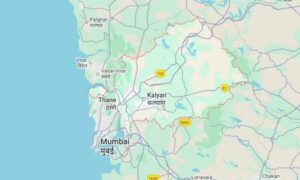
The Delhi government has directed all schools in the national capital to suspend outdoor sports activities in November and December in view of the health risks the deteriorating air pollution levels could pose to children, The Times of India reported on Friday.
The directive came after the Supreme Court on Wednesday urged the Commission for Air Quality Management, a statutory body formed in 2020 to address pollution in the National Capital Region and adjoining areas, to consider asking schools to shift such activities to “safer and less susceptible months”.
Following this, the air quality panel said in an advisory that all sports activities in schools should be postponed, adding that the current air quality in the national capital posed significant health risks to children, India Today reported.
The advisory was also extended to universities, colleges and recognised sports associations in Delhi-NCR.
On Friday, the Air Quality Index at 11 of the 39 monitoring stations in Delhi recorded readings above 400, categorised as “severe”, showed the Sameer application, which provides hourly updates published by the Central Pollution Control Board, at 2.44 pm.
Despite restrictions to curb pollution, Delhi’s average AQI stood at 364, placing it in the “very poor” category, the data showed.
In areas adjoining the national capital, Ghaziabad recorded the most severe pollution levels with an AQI of 422. Noida logged “very poor” air quality with an index of 394, while Greater Noida reported an AQI of 352.
In Haryana, Gurugram registered an AQI of 288, placing it in the “poor” category, while Faridabad recorded an AQI of 238.
An index value between 0 and 50 indicates “good” air quality, between 51 and 100 indicates “satisfactory” air quality and between 101 and 200 indicates “moderate” air quality. As the index value increases further, air quality deteriorates. A value of 201 and 300 means “poor” air quality, while between 301 and 400 indicates “very poor” air.
Between 401 and 450 indicates “severe” air pollution, while anything above the 450 threshold is termed “severe plus”. An Air Quality Index in the “severe” category signifies hazardous pollution levels that can pose serious risks even to healthy individuals.
Delhi has been recording “poor” or worse air quality since mid-October, leading to Stage 3 restrictions under the Graded Response Action Plan being imposed on November 11.
GRAP is a set of incremental anti-pollution measures that are triggered to prevent further worsening of air quality once it reaches a certain threshold in the Delhi-NCR region.
Restrictions under Stage 3 entail a ban on non-essential construction work and the closure of stone crushers and mining activities, in addition to the measures already imposed under Stage 1 and Stage 2.
They also include shifting primary classes up to Class 5 to hybrid mode.
Additionally, the use of BS-III petrol and BS-IV diesel cars is restricted in Delhi and the NCR. BS norms, or Bharat Stage Emission Standards, are regulations set by the Indian government to control air pollutants from motor vehicles.
Air quality deteriorates sharply in the winter months in Delhi, which is often ranked the world’s most polluted capital.
Stubble burning in Punjab and Haryana, along with the lighting of firecrackers during Diwali, vehicular pollution, falling temperatures, decreased wind speeds and emissions from industries and coal-fired plants contribute to the problem.
On Monday, the Supreme Court declined to impose year-round restrictions on activities prohibited under GRAP, holding that the national capital “cannot be brought to a standstill” in the name of fighting air pollution.
Also Read:
📰 Crime Today News is proudly sponsored by DRYFRUIT & CO – A Brand by eFabby Global LLC
Design & Developed by Yes Mom Hosting






